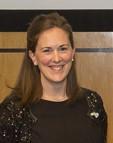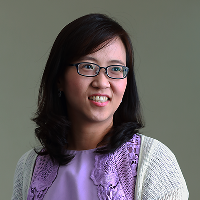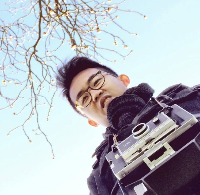Blog
Unless otherwise stated, content is shared under CC-BY-NC Licence
Sharing is caring: tell someone new about digital preservation today!
Rise and shine digital preservationists of the western hemisphere! It’s World Digital Preservation Day, and all is well! There are things to see and do and celebrate – and people to tell about the wonders of digital preservation!
At-Risk Material in UCT Libraries’ Special Collections
Andrea Walker works in Special Collections at the University of Cape Town Libraries, South Africa
At-Risk Material in UCT Libraries’ Special Collections
This year, the first that UCT Libraries is participating, the theme for World Digital Preservation Day is At-Risk Digital Materials. It’s as if it was tailor-made for us. Even though I work in the historic, beautifully restored Jagger Library, I spend most of my time these days down in the basement, 2 or 3 stories underground (it’s hard to measure that when you’re on the side of a mountain). Right at the bottom is our AV archive. I’m currently undertaking an audit, to determine not only what’s there, but also what the exact format is, and when the material was recorded, among other things. Why? Because these materials only have a limited lifespan. Some of them were kept in less than ideal conditions before being deposited with us, and it shows. Most of them are in formats that are no longer easily accessible.
The UNESCO/DPC Executive Guide on Digital Preservation
Robert Buckley is the Chair of the PERSIST Policy Working Group and a Technical Adviser at the National Archives of the UAE.
UNESCO and the Digital Preservation Coalition (DPC) have collaborated to produce the Executive Guide on Digital Preservation, an online resource for raising awareness of the importance of digital preservation in archives, libraries and commercial enterprises—any organization that has digital assets to preserve and access. While many of us are often immersed in the technical aspects of digital preservation—in my case color image digitization and compression, it is generally realized that a successful and sustainable implementation of digital preservation requires support and commitment across an institution and beyond in the prevailing political, legislative and fiscal environment.
Towards Making Palestinian Research Preserved and Accessible
Rawia Awadallah is Manager of the ROMOR Project in Palestine
The Research Output Management through Open Access Institutional Repositories in Palestinian Higher Education (ROMOR) project aimed to build capacity in research output management in four leading Palestinian State (PS) Higher Education Institutions (HEIs) through establishing Open Access Institutional Repositories (OAIRs) to store and share research outputs and increasing support staff capacity to implement and promote repository related policies and services. The Project was led by the Islamic University of Gaza and brought together three other PS partners (Birzeit University, Al Quds Open University, and Palestine Technical University) with four European HEIs (the Technical University of Vienna, Austria; the University of Parma, Italy; the University of Brighton, UK; and the University of Glasgow, UK).
When digital preservation is turned into a municipality organisation
Karin Bredenberg is Metadata Strategist at Sydarkivera in Sweden
In 2015 the municipality organisation Sydarkivera was founded in southern Sweden with the goal of supporting members with digital preservation. Since then, with the growing number of members, the goal has also come to include analogue archiving. Today the number of members is 27 and in two years’ time an additional 10 will have joined Sydarkivera.
Sydarkivera originated from the need for municipalities to archive their digital information, as in Sweden, municipalities are required by law to have their own archives and act as their own archival institution. Digital information has been around for a long time so the arrival of the need for archiving digital material made the municipalities see the need to join forces and share their competences. In Sweden, municipalities can join in a municipality organisation which in turn functions like its own municipality. I know it’s not easy to really explain briefly but we are working together and have a shared archival organisation! What started in southern Sweden is quickly growing north towards central Sweden… There’s a wide interest in joining the organisation and becoming a Sydarkivera member!
From “research output” to “research data” - a willingness to move forward?
Wachiraporn Klungthanaboon is Lecturer at the Department of Library Science at Chulalongkorn University in Thailand
About 10 years ago, the idea of collocating and providing digital research outputs through an institutional repository or a subject repository for online access was introduced to Thailand. For example, the Library at Chulalongkorn University had built its institutional repository named “CUIR - Chulalongkorn University Intellectual Repositories”. The CUIR has been developed gradually through time in order to serve our users’ information behavior in terms of the increasing number of research outputs, extended collection coverage, and more open access.
A Reflection: Outreach about digital preservation
Matthew Yang Jiefeng is Archive Officer at the Asian Film Archive in Singapore
The Asian Film Archive (AFA) reflects on its recent engagement with film students during an outreach session. The interaction with the students revealed that complacency is a major plague amongst content producers, posing a risk to the films that are under their care. Furthermore, many of them have misconceptions of digital data and how to care for them. This blog post shares some of the underlying assumptions AFA encountered during its interactions with the film community and its plans to address these challenges.
As we celebrate World Digital Preservation Day with colleagues around the world, we at the Asian Film Archive (AFA) are reflecting on a recent engagement with a group of film students in a film school in Singapore. We were speaking to them as part of the AFA’s engagement with the filmmaking community on preserving and caring for their works, to encourage good practices and to create awareness on common misconceptions about preservation practices.
People Get Ready - The WDPD Edition
At iPRES this year I presented a (rapid fire!) paper sharing my thoughts on the current state of digital preservation workforce development. The headlines were:
Working together to reduce digital information at risk
Zhenxin Wu is Professor of the Information System Department, and Deputy Director of the Digital Preservation Center of Chinese Academy of Sciences at the National Science Library in Beijing, China. She is also responsible for the technical system and data archive for NDPP (National Digital Preservation Program).
[Chinese version follows]
---From CCDP2019 to WDPD2019 and iPRES2020
Thanks to the invitation from DPC, I have an opportunity to be involved in World Digital Preservation Day again and also to introduce China's progress in digital preservation.
After being busy with Chinese Conference on Digital Preservation 2019 (CCDP, http://dipres2019.csp.escience.cn/dct/page/1 ), I start writing this blog for WDPD2019. Just like DPC's World Digital Preservation Day has become an international event, the CCDP series of conferences have also became the most important event for Chinese archivers. The surprises and exhaustion brought by CCDP2019 have not disappeared, and my mind is still full with CCDP2019.
Bits and Bytes: The Video
Jaye Weatherburn is Program Manager, Digital Preservation at The University of Melbourne in Australia
This year for World Digital Preservation Day, several passionate souls at the University of Melbourne, in collaboration with friends from the Australasia Preserves community of practice, have produced a video to celebrate all things digital preservation.























































































































































